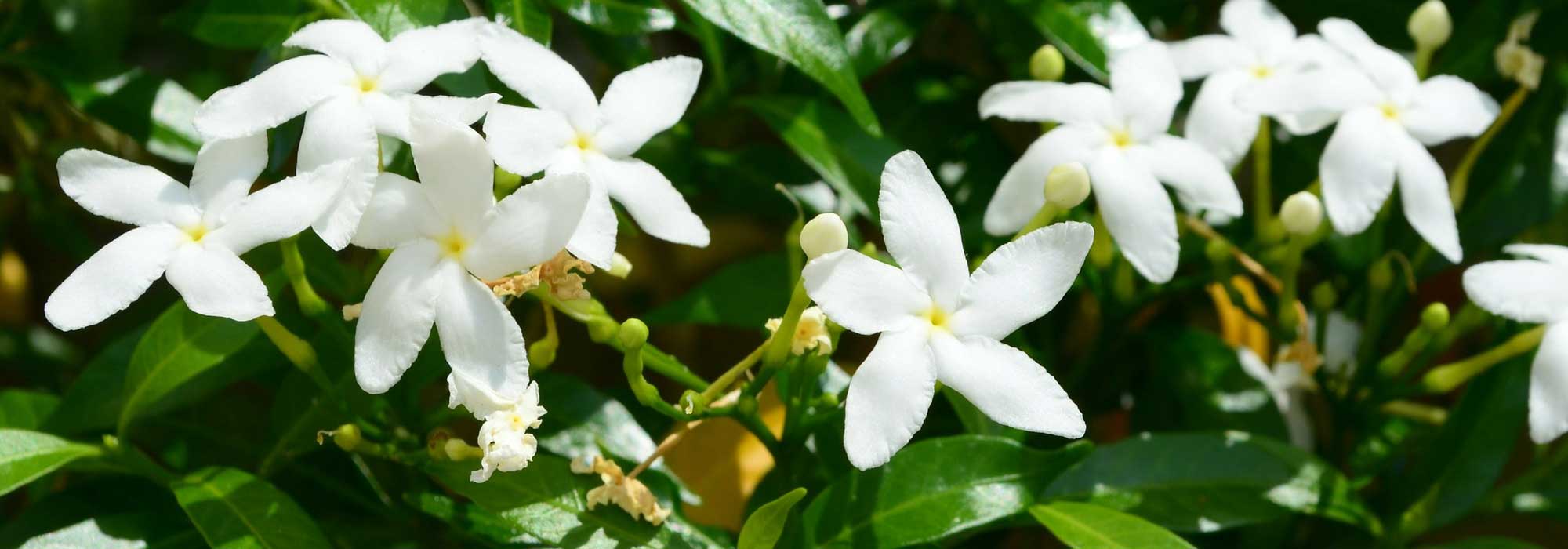
Jasmin : planting, pruning and care
Contents
Jasmine in a nutshell
- Jasmine flowers are famous for their delicate, intensely floral and divinely heady fragrance
- It produces a multitude of small star-shaped flowers in white, yellow or pink depending on the varieties in winter, spring or summer
- It is a climbing plant that is really easy to grow in warm climates
- With variable hardiness depending on the species, its cultivation in open ground is mostly only possible in mild climates, but it adapts well to pot cultivation
- It is perfect for dressing a pergola or a sunny wall
A word from our expert
Jasmine is, alongside the rose, one of the iconic flowers of perfumery. Famous for the exceptional, sweet and heady fragrance they exude, jasmine flowers evoke distant exoticism and are, in the garden, a true invitation to travel. We love jasmine for its floribundity, its ability to tirelessly produce bouquets of small pure white, yellow or even pink star-shaped flowers.
But that’s not its only asset! Its elegant foliage remains evergreen in the favour of a mild winter.
Some varieties are suitable for pot and indoor cultivation, while others, more hardy, will thrive in gardens with a mild climate.
From yellow jasmine or winter jasmine, to Jasminum polyanthum and Madagascar Jasmine, through white jasmine or common jasmine, covered in small white and highly fragrant stars, there is not just one jasmine but many!
Depending on the species, jasmine blooms in every season, from December to April for winter jasmine (Jasminum nudiflorum), and from June to September for summer jasmine.
While all jasmines are remarkably floriferous in the sun and in cool soil, they are quite frost-sensitive and perish below -10°C, for the hardiest among them. These climbing plants from mild climates are easily grown in the ground in the south of France; elsewhere, they can be adopted in a large pot to be stored away in winter.
Jasmine is ideal for dressing walls, pergolas, wrapping around a fence or climbing up a tree, especially in the company of another climber like a rose or a clematis.
Potted jasmine for the conservatory or simply the terrace, or jasmine to be grown in the ground, let yourself be surprised by their generous and graceful flowering and choose the right jasmine from our collection!
Description and Botany
Botanical data
- Latin name Jasminum
- Family Oleaceae
- Common name Jasmine
- Flowering December to April and June to September
- Height 2 to 10 m
- Exposure Sun, partial shade
- Soil type All, well-drained
- Hardiness -5°C to -10°C depending on varieties
The Jasmine is a woody climbing plant with deciduous or evergreen foliage belonging to the Oleaceae family. The genus Jasminum includes over 200 species, native to Egypt, Africa, and Asia, particularly China. In its natural habitat, jasmine grows in woods, at the forest edges, and on rocky slopes.
Most jasmines are easily cultivated in the ground, in regions where temperatures do not drop below -10°C for short periods. The most common species in our gardens are the hardiest ones (-10° to -12°C).
Common jasmine (Jasminum officinalis, also known as white jasmine) is frequently encountered, and it is, along with False Jasmine (Trachelospermum jasminoides), one of the most fragrant. Winter jasmine (Jasminum nudiflorum), with its non-fragrant yellow flowers, is the hardiest of the genus and is sometimes confused with forsythia at the end of winter. The Star Jasmine or false jasmine (Trachelospermum jasminoides) and its numerous cultivars are very popular, although it is not a true jasmine but a woody and climbing Chinese cousin whose fragrant white flowers are very similar to true jasmine (it does not belong to the botanical family of jasmines but to that of periwinkles).
There are shrubby or bushy jasmines (J. fruticans, J. humile, the most common) that lack tendrils, and climbing or perennial lianas (winter jasmine, common jasmine), which wrap around any support and are much better known to gardeners. Some jasmines are sometimes more sarmentous than truly climbing.
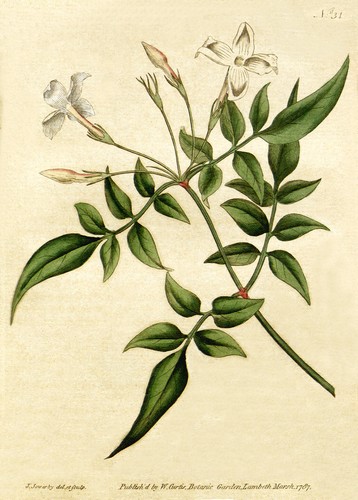
Jasminum officinale – Botanical illustration
Depending on the species, the habit can be more bushy than climbing, and the size varies.
Some, (Jasmin officinal) guided on a trellis or against a wall, can climb over time up to 10 m in all directions under favourable conditions. The growth is quite rapid.
If left to grow unimpeded, they develop on the ground and form a somewhat untidy bush that will not exceed 1.5 m in all directions. There are dwarf species often used as ground cover like J. parkeri and the ‘Ogon Nishiki’ selection, which slowly form a small cushion 20 cm to 80 cm high.
Once well established, jasmine can live for many years.
Its long twining or sarmentous stems form a tangle of fine and slender branches bearing foliage that is both lush and light. The foliage of jasmine is evergreen, semi-evergreen, or deciduous below -5/-6 °C, depending on the varieties and the climate; the colder the climate, the more jasmine will lose its leaves. It is therefore most often deciduous in our climates. Sometimes, due to cold or intense drought, the leaves may redden, fall, and then reappear when conditions become favourable again.
The leaves, ranging from 1 to 20 cm long, are simple, pinnate, opposite or alternate, composed of 3 to 13 oval to lanceolate leaflets, sometimes pointed at the tip and with edges that are sometimes undulate, reduced in some species to a single leaflet. They are thick and leathery and glossy depending on the varieties.
Ranging in colour from light green, intense green, bright green, to golden yellow (Jasminum officinale ‘Aureum’), they are variegated with cream-white in the False Jasmine (Trachelospermum jasminoides ‘Variegatum’). The Trachelospermum asiaticum ‘Ogon-Nishiki’ is distinguished by its very beautiful multicoloured foliage variegated with green, cream, and red, which takes on beautiful orange, yellow, and bronze hues in cold weather.

Several foliage types, some of which are very decorative: Jasminum grandiflorum, Trachelospermum jasminoides ‘Variegatum’, Trachelospermum asiaticum ‘Ogon Nishiki’, Trachelospermum asiaticum ‘Theta’, Jasminum officinale ‘Aureum’.
Graphical and elegant, this vegetation flourishes lightly, serving as a backdrop to the flowering.
Jasmine captivates with its generous and graceful flowering with an enchanting fragrance. Jasmine blooms in every season. We distinguish between winter jasmines (Jasminum nudiflorum, Jasminum polyanthum) that bloom from December to April and summer jasmines (Common Jasmine, Star Jasmine) whose flowering extends from May to September.
It blooms abundantly in the form of a multitude of small star-shaped flowers with 5 petals that are sometimes twisted, more or less narrow, arranged in a spiral. They open up, gathered in numerous small bouquets of 3 to 5 flowers 1 to 5 cm in diameter, at the axil of the leaves or at the tips of the branches, sometimes umbellate or paniculate.
While these small stars are often a pure white, Jasminum beesianum (the “red jasmine” or “pink jasmine”) bears carmine-red flowers, Jasminum officinale ‘Clotted Cream’ has large cream-yellow stars, Jasminum stephanense has a multitude of small pale pink flowers, Jasminum polyanthum has porcelain pink blooms, while they are yellow in winter jasmine (J. nudiflorum) and in the star jasmine ‘Star of Toscane’.

Several flower colours: Jasminum nudiflorum, Jasminum officinale, Jasminum stephanense, Trachelospermum jasminoides.
If there is a flower famous for its divinely intoxicating fragrance, it is indeed that of jasmine! The intensity of the fragrance, however, varies from species to species. While Jasminum grandiflorum or “Grasse Jasmine” exudes a heady, intensely floral scent that forms the heart of prestigious perfumes in French perfumery (such as a certain No. 5…), some jasmines, like Jasminum nudiflorum, are not fragrant. Aside from this last one, all emit a fruity, green fragrance, supported by a white floral note.
Others, like J. officinale, can be smelled from 2 meters away, while others, like false jasmine, express a vanilla scent, sweeter than floral, reminiscent of biscuits. It takes about seven million flowers to obtain one kilogram of absolute jasmine essence.
The delicate fragrances become more powerful at dusk or in warm weather: they then perfume several meters in the garden or on the terrace on summer evenings.
Melliferous, they attract a host of foraging insects in season.
Some jasmines produce black berries after flowering. The star jasmine (Trachelospermum jasminoides) produces curious fruits resembling small curved green beans, a rare fruiting occurrence, it should be noted, in our latitudes.
Most jasmines are quite frost-sensitive, rarely tolerating temperatures below -5 °C/-8°C. They are easy to grow in the ground, in regions with very mild winters. However, some, like winter jasmine (Jasminum nudiflorum) or (Jasminum humile), are perfectly hardy throughout France and can withstand winters down to -12/-15 °C.
In cold regions, jasmine will be grown on the terrace or balcony in large pots to be stored in winter in a veranda, even if unheated.
Jasmine appreciates warm exposures and shelter from the winds. It grows in full sun but tolerates partial shade, especially in the south of France, in deep, humus-rich, and well-drained soil.
In mild climates where frost is rare, it will find its place in the garden if you provide it with a support to help it develop more easily. It will climb up shrubs, pergolas, trellises, arbors, cover a fence, and even weave its way into an evergreen hedge.
If not trained, it can also form a magnificent ground cover.
Since the mid-17th century, Jasmine has been the floral star of the city of Grasse, which is traditionally the cradle of jasmine cultivation for perfumery, particularly that of Jasminum grandiflorum or “Grasse jasmine.” An international perfume museum is dedicated to it.
Dried jasmine flowers are also highly valued for flavouring green tea.
Main species and varieties
On distinguishes more than 200 species of jasmines, varying in hardiness, height, flowering period, and flower colour. The species most commonly found in our gardens are the hardiest (-12° to -15°C) and the easiest to grow, such as winter jasmin (J. nudiflorum) and common jasmin.
Some, like J. nudiflorum with yellow flowers, flower in winter even under snow and are not scented at all, while others can be detected from several metres away in the garden on summer evenings. The Jasminum officinale or white jasmin is one of the hardiest of the scented jasmines. The star jasmin or false jasmin (Trachelospermum jasminoides), akin to true jasmin, is essential in gardens of mild climates.
The Jasmin Beesianum, also known as “bee’s nest jasmin” with its carmine-red scented flowers, the stéphanois jasmin (Jasminum stephanense), a natural hybrid between common jasmin and beesianum jasmin, one of the rare pink-flowered varieties, are also frequently found. Jasminum multipartitum (wild star jasmin) is a lovely, little-known semi-climbing scented liana from South Africa.
Apart from winter jasmin (Jasminum nudiflorum), perfectly hardy in all our regions but lacking fragrance, other jasmines rarely tolerate temperatures below -5 °C.
The other less hardy species (around -5°C), such as Jasminum grandiflorum, known as “De Grasse” jasmin or commonly “Spanish jasmin”, Jasminum azoricum (syn. Jasminum suaveolens), also called “Azores jasmin” or Madeira jasmin, and Jasminum polyanthum, are often grown in greenhouses or on verandas as indoor plants. Like Madagascar jasmin (Stephanotis floribunda), which, given its heat (18 to 22°C) and humidity needs, is only grown indoors under our latitudes.
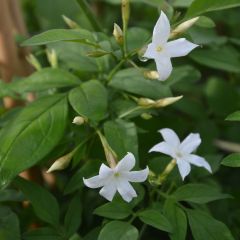
Jasminum officinale - Common jasmine
- Flowering time August to October
- Height at maturity 5 m
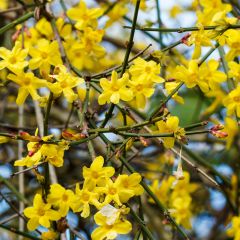
Jasminum nudiflorum - Winter jasmine
- Height at maturity 2,50 m
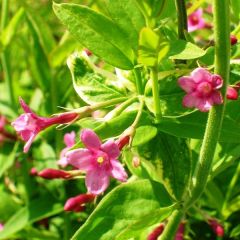
Jasminum beesianum - Red jasmine
- Flowering time June to August
- Height at maturity 3 m
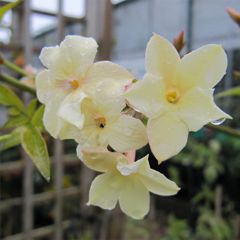
Jasminum officinale Clotted Cream - Common jasmine
- Flowering time August to October
- Height at maturity 2,50 m
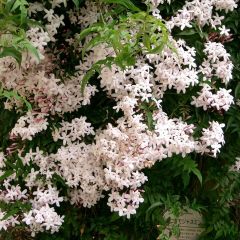
Jasminum polyanthum - Pink Jasmine
- Flowering time March to May
- Height at maturity 3 m

Trachelospermum jasminoides - Star Jasmine
- Flowering time July to September
- Height at maturity 6 m
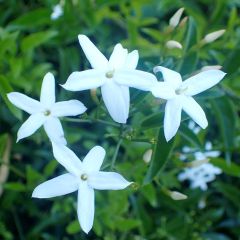
Jasminum azoricum - Lemon-Scented Jasmine
- Flowering time August to October
- Height at maturity 4 m
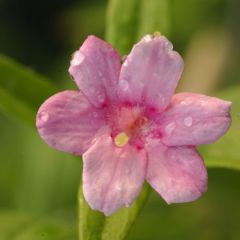
Jasminum x stephanense
- Flowering time July to September
- Height at maturity 3,50 m

Stephanotis floribunda - seeds
- Flowering time April to November
- Height at maturity 6 m
Jasminum officinalis Aureum - Common Jasmine
- Flowering time July to October
- Height at maturity 4 m
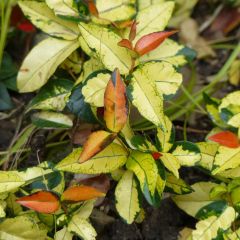
Trachelospermum asiaticum Ogon-Nishiki - Asian Jasmine
- Flowering time July to September
- Height at maturity 80 cm
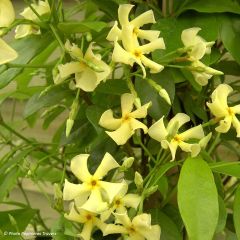
Trachelospermum asiaticum - Asian Jasmine
- Flowering time July to September
- Height at maturity 4 m
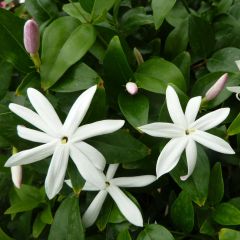
Jasminum multipartitum - Starry Wild Jasmine
- Flowering time June to September
- Height at maturity 1,50 m
Discover other Jasmine
View all →Available in 0 sizes
Available in 0 sizes
Available in 0 sizes
Available in 1 sizes
Available in 3 sizes
Available in 3 sizes
Available in 1 sizes
Available in 1 sizes
Available in 1 sizes
Available in 0 sizes
Planting
Where to Plant Jasmine
The hardiness of jasmine varies by species: we distinguish between jasmine that can withstand temperatures as low as -15 °C for short periods (J. beesianum, J. humile, J. nudiflorum, which even flowers under snow, and J. officinale), which can be grown outdoors without issues, those that must be reserved for mild climates (down to 5 °C) (Jasminum azoricum), and jasmine that are indoor plants.
Most jasmines are therefore quite tender or moderately hardy and rarely tolerate severe frost. They are easy to grow in regions with mild winters as their hardiness is often put to the test elsewhere.
In regions with harsh winters, jasmine should be grown in a large pot well protected on the terrace, brought indoors or into a cold greenhouse during winter, sheltered from severe frosts.
When temperatures drop below -5°C, the foliage becomes deciduous. Even among the hardiest, young shoots and flower buds are sensitive to severe frost and blacken below -10°C. However, if the stump is well established, jasmine is capable of regrowing in spring, producing new shoots.
→ Learn more in our advice sheet: Which Jasmine to Plant Depending on Your Region?
Jasmine prefers a well-drained soil and a very sunny exposure, sheltered from cold winds. Jasmine flowers prefer partial shade in hot climates. In cold regions, place it against a wall facing south.
While it is easy to succeed in good garden soil that remains cool in summer, it has a preference for rich, deep soils, which will ensure optimal growth. Flowering is remarkably long in cool soil: in summer, it appreciates that the soil remains sufficiently cool with good mulch.
Once well established, it will be quite resistant to summer drought. Some species, like winter jasmine, can tolerate poor, stony, or slightly calcareous soil, as long as it is always perfectly drained. In waterlogged soils, jasmine stagnates and eventually declines.
It is a vigorous shrub liana that requires a well-ventilated location: its mature development can cover more than 8 m in all directions over time. Trained, it can reach several meters in height.
The lianas will wrap around any support (wire fence, trellis), while more sarmentous jasmines will be trained or leaned against a wall.
Jasmine needs a support of its size to spread properly. With its sarmentous or voluble stems, it climbs or clings to many supports: pergolas, arches, arbors, walls, up to the tops of small trees, or can climb a fence. If not trained, it will crawl on the ground and form a fragrant and flowering ground cover in a sunny rockery.
It finds its place in the scent garden, to thicken a persistent hedge (in winter, its bare branches will blend into the vegetation, in summer, it will form a flowering and fragrant bush) or in a large pot on the balcony or terrace to fully enjoy its enchanting fragrance.
Its foliage is semi-persistent during mild winters: a significant advantage when wanting to hide an unsightly wall. It is also perfect for edging the edge of a staircase, crowning a slope. Place it in high-traffic areas to fully enjoy its unique fragrance.
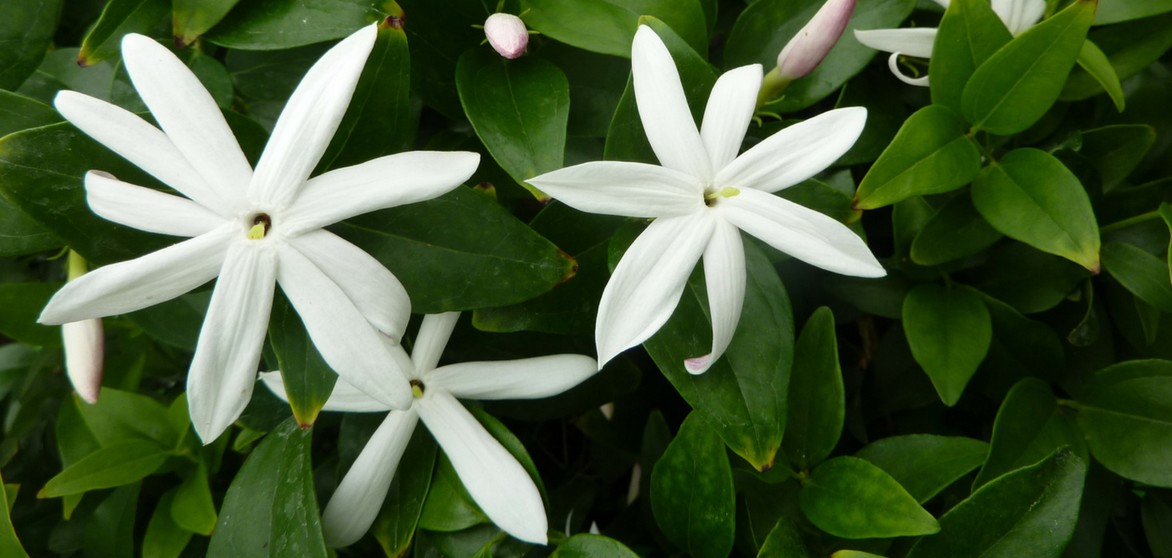
Flowers of Jasminum multipartitum.
When to Plant Jasmine
Jasmine is preferably planted in spring from March to April or in May when temperatures rise in cooler regions (in any case after the last frosts) and from September to November in dry, warm climates.
How to Plant Jasmine
In the Ground
Maintain a planting distance of 1.5 to 2 m. Given the development of this liana, 1 plant per m² will suffice to cover approximately 5 to 8 m² in a few years. Vary the species of jasmine to stagger the flowering and enjoy flowers almost all year round.
- Dig a hole two to three times wider than the root ball
- Spread a layer of gravel or clay balls to allow for good drainage and prevent stagnant moisture at the roots during the winter season
- Mix organic fertiliser or a bit of potting soil with the extracted soil
- Place the pot slightly tilted towards its support
- Fill the hole with the same mixture
- Lightly compact and water abundantly
- Plant perennial plants around the base to keep it cool in summer or apply a plant mulch
- Train the branches on the support
Growing Jasmine in a Pot
Jasmine is vigorous even in a pot. The substrate must be very draining to avoid stagnant moisture at the roots.
- In a large pot of at least 50 cm in diameter, spread a good layer of drainage (gravel or clay balls)
- Plant your jasmine in a mixture composed of 50% potting soil or special Mediterranean plant soil
- Attach the stems to the support
- Water at planting and then every three to four days during growth
- Bring the pot indoors in winter, sheltered from the cold but in light, in a conservatory or a temperate greenhouse at around 16°C
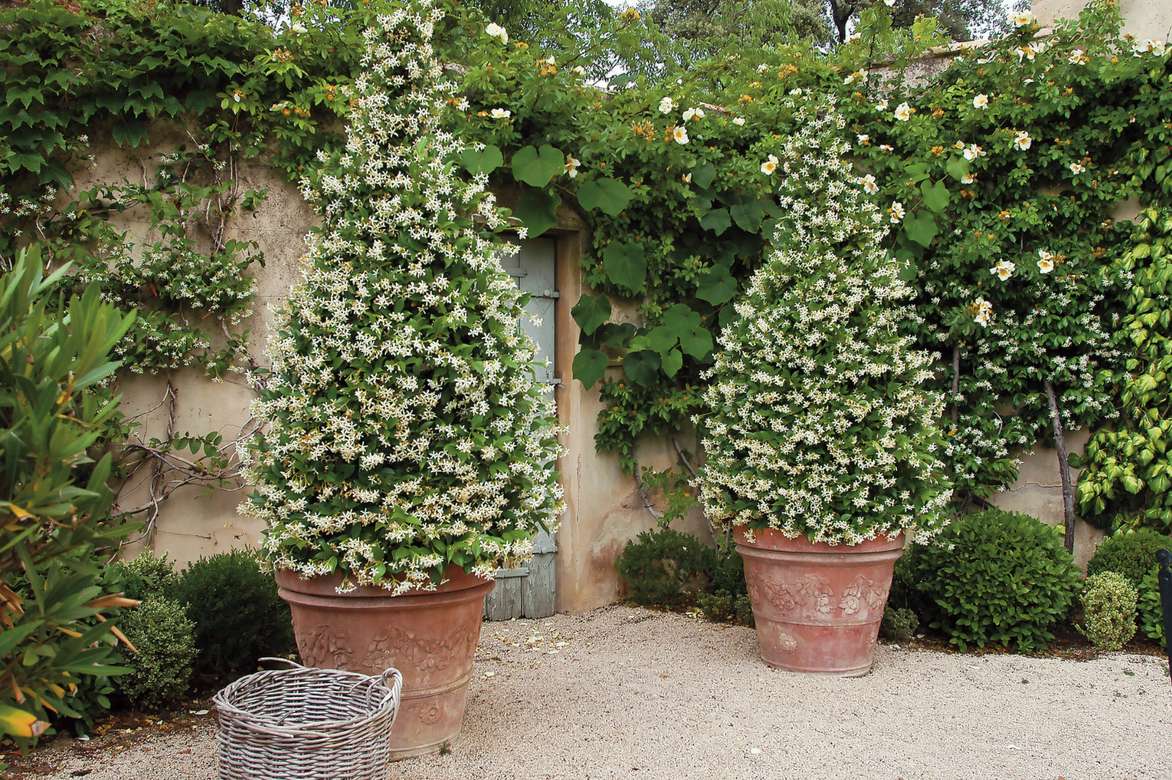
Jasmine grows very well in a pot.
→ Learn more about growing jasmine in a pot
What Support to Choose for Jasmine?
The jasmine needs a support to climb, as its stems are not rigid enough to support its weight. Some so-called “voluble” species (Jasminum azoricum) can cling on their own to any support provided thanks to tendrils that do not need to be tied, just guide the shoots at the start, then the plant will manage on its own.
Most jasmines do not have tendrils, which is why it is necessary to train them. There are multiple supports; jasmine can lean against a wall, cascade from the top of a low wall, wrap around a tree, climb up a fence, or cling to a trellis, an arbor, a stair railing, a pergola, or form, on two arches connected by wires, a vegetable tunnel between two areas of the garden.
→ Learn more about its training in How to Train a Star Jasmine?
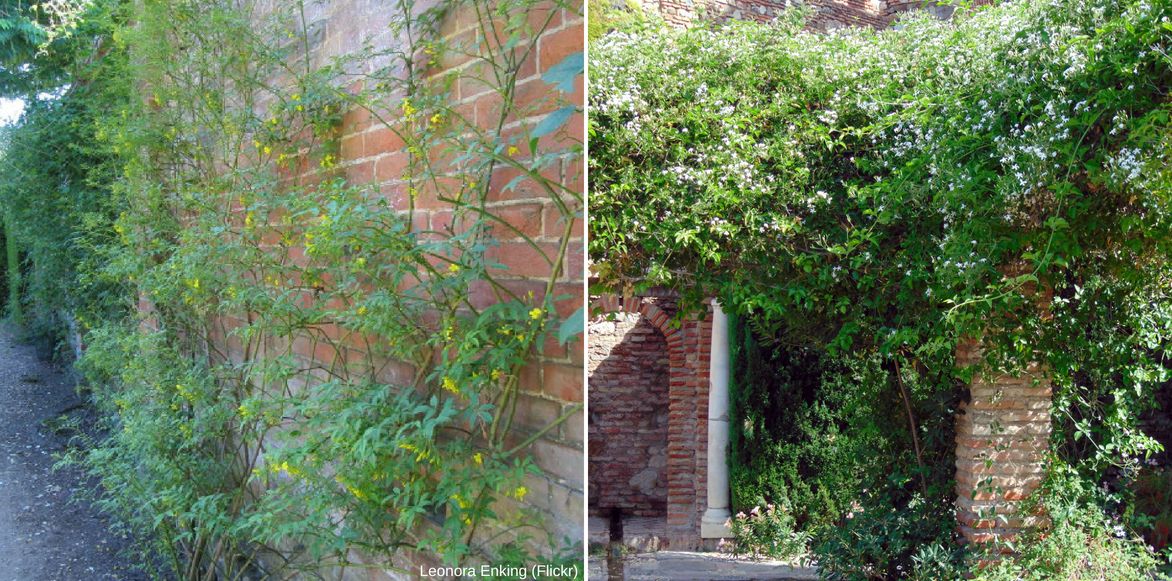 Depending on the species, jasmines can be trained on a wall or cascade from the top of a stone wall, for example.[/caption>
Depending on the species, jasmines can be trained on a wall or cascade from the top of a stone wall, for example.[/caption>
Maintenance, pruning and care
Once well established, the jasmine requires little care; however, it is quite thirsty in summer and needs fertile soil: water and fertiliser improve its flowering.
At the start, help its stems to climb. Train the new shoots as they develop.
From early spring until mid-September, apply a low-nitrogen liquid fertiliser (rose fertiliser) diluted in the watering water, every 15 days.
During growth and in summer, as soon as the plant has buds, water every three to four days, as soon as the soil is dry but without excess. In winter, every eight to ten days, allowing the soil to dry out well between waterings. Also mulch in summer to keep the base cool if you haven’t planted ground cover plants.
In case of severe cold forecast and during the first years of cultivation, protect the aerial parts of the plant with a winter cover. To protect it from frost, mulch the stump during the first winters, and in regions where winters are harsh. In case of frost on the stump, jasmine is capable of recovering, starting again from the base.
In cold regions, bring potted jasmines indoors before the first frosts, keeping them safe from the cold in a bright frost-free room. Inside, ensure they have high humidity as the foliage and flowers wilt quickly if the ambient air is too dry: regularly mist the foliage with non-limestone water. Repot every two to three years in spring or autumn.
Pruning Jasmine
Pruning jasmine is recommended and should be limited to light pruning, always after each flowering, to control its spread and remove weak, damaged, or dry stems. It does not mind being refreshed regularly, which will keep it bushy and dense with generous flowering.
Every 2 or 3 years, after flowering, to maintain a compact habit, cut back the faded stems to just above large buds or above young shoots emerging from the base.
For an adult jasmine, over 3 years old, cut back to the base, between a quarter and a fifth of the stems to encourage the formation of young stems. The more vigorous ones will produce more flowers.
→ Also read our tutorial: How to prune a jasmine?
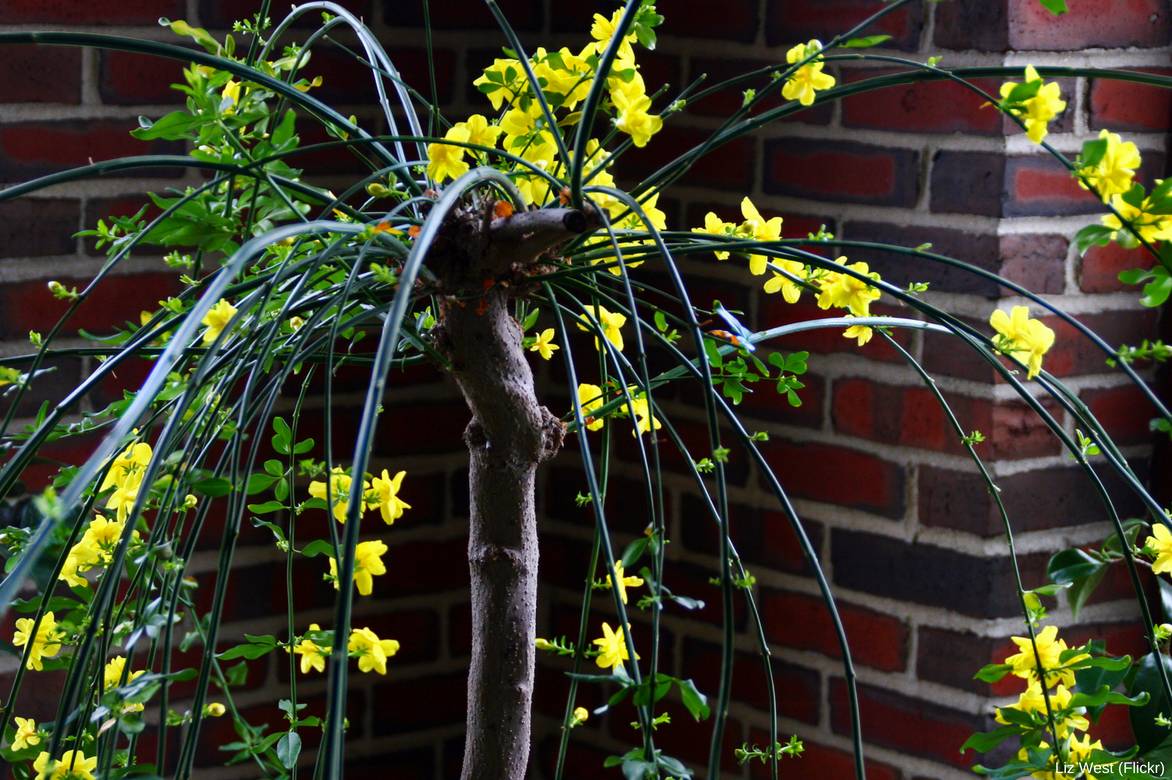
Jasminum mesnyi grown on a stem.
→ Learn more about the care of winter jasmine in our advice sheet!
Diseases and potential pests
Jasmine has few known enemies apart from mealybugs and aphids.
Young shoots can be attacked by mealybugs, identifiable by the cottony and sticky masses they leave on the leaves. These small sucking and piercing insects slow down growth and discolour the foliage. Remove the unwanted pests with a cotton pad soaked in 90°C alcohol, then treat with sprays of rapeseed oil and soap. Repeat two or three times at 15-day intervals.
The presence of aphids is noticeable on sticky leaves, which curl and roll in on themselves. Spray with water mixed with black soap or Marseille soap.
→ Learn more about diseases and pests of jasmine in our advice sheet.
Multiplication
Jasmine propagates easily by propagation by cuttings or layering.
How to propagate jasmines by cuttings?
- After flowering, in summer, take semi-woody cuttings of 15 cm in length (these are the stems that grew in spring and begin their transformation from softwood to hardwood from July-August)
- Remove the lower leaves, keeping those at the top of the stem
- Plant them in a light, well-draining substrate of sand and turf
- Regularly moisten the substrate with a spray bottle
- Place the pot in the shade under cover, away from frost
- Plant in the ground the following spring
By layering
- At the end of autumn, choose a low branch and bend it towards the ground
- Remove the lower leaves
- Make a cut in the bark about 3 to 5 cm at the end of the branch
- Burrow part of it for rooting by covering it with potting soil and sand
- Secure the layer in the ground with a hook (like a tent peg)
- Stake the aerial part if necessary
- One year later, in the following autumn, you can separate the layer from the mother plant; it will have enough roots: cut the stem where it goes into the ground
- Replant this layer in the ground
→ Learn more about the propagation of winter jasmine (Jasminum nudiflorum) in our tutorial!
Associate
The Jasmine offers a dual appeal, flowering and fragrance, to all your walls and fences. Graceful and delicate, it flourishes in varied garden styles, bestowing elegance and poetry. It is a must-have for scented gardens and white gardens.
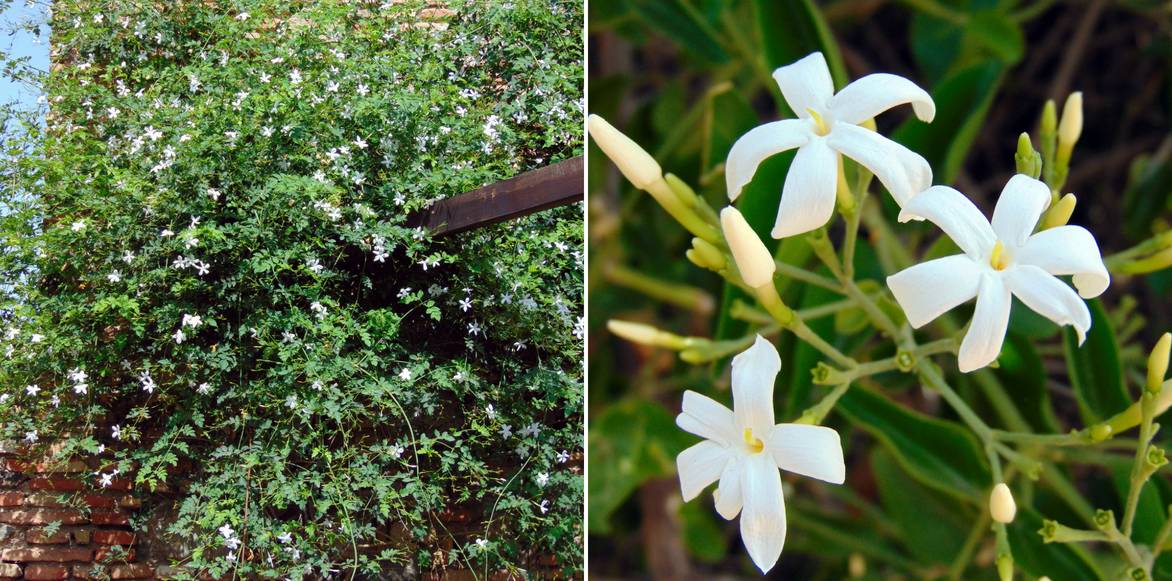
The Jasminum azoricum colonises any support and beautifully adorns a wall.
White jasmines (star jasmine, j.officinale) bring a pure note against a graphic backdrop composed of ‘Pingwu’ bamboos whose green culms are sheathed in white, or a decidedly romantic touch with climbing hydrangeas like Hydrangea petiolaris.
They can be found in fragrant, fresh, and romantic white/pink combinations with roses and other beautiful climbers.
Jasmine thrives in isolation and will elegantly and fragrantly dress any support provided to it.
In mild climate gardens, it can be grown against a wall where it often flowers more abundantly, embracing small trees alongside a climbing rose or an evergreen honeysuckle or cascading from the top of a low wall. It can also cover a slope and form an excellent ground cover (‘Ogon Nishiki’), with creeping ceanothus, even in the shade of deciduous trees, as an alternative to ivy.
In a evergreen hedge, jasmine will be discreet in winter, hidden by the foliage of companion plants, while in summer, it will enhance the whole with a multitude of small star-shaped and fragrant flowers.
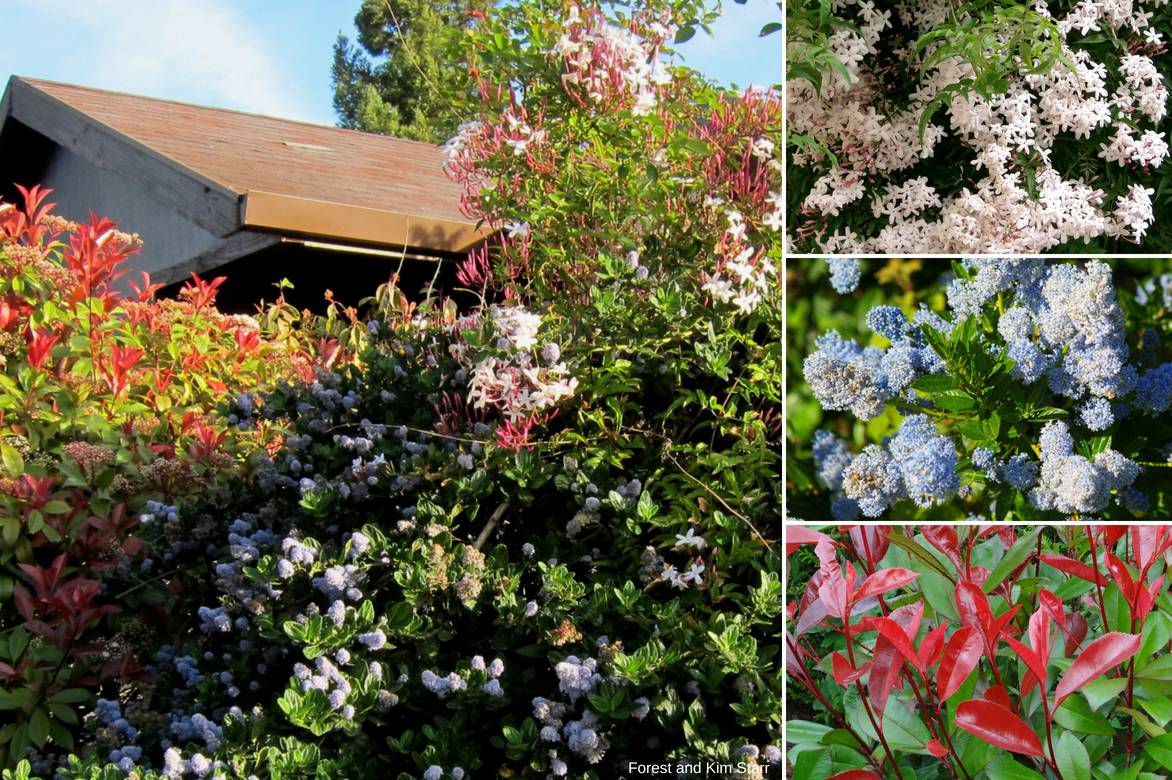
An example of an association in an evergreen hedge: Jasminum polyanthum, Ceanothus arboreus ‘Concha’, Photinia fraseri ‘Red Robin’.
It easily associates with other climbing plants to add more relief, take over the fragrant relay, and extend the flowering season: its branches will intertwine with those of clematis (‘Alba Plena’, ‘Bicolor’ or ‘Cassis’) spring or winter (clematis cirrhosa), honeysuckles, or climbing Solanum.
In open ground or in pots on the terrace, it would be wise to pair it with another climbing plant with staggered flowering like the Ampelaster carolinianus, a climbing aster that blooms in late autumn and winter.
Mix jasmines together, blending colours, varieties, and types: you will extend the flowering! At their feet, Mexican oranges and bushy Lavateras will naturally find their place.
The jasminum nudiflorum with bright yellow flowers will serve as a backdrop for hellebore, winter iris, snowdrops and will also pair well with evergreen climbers like ivy or shrubs that retain their berries in winter such as firethorn (Pyracantha) and Cotoneaster horizontalis.

An example of an association: Laburnum watereri ‘Vossii’, Syringa patula ‘Miss Kim’, Jasminum nudiflorum.
Pink jasmines (Jasminum stephanense, Beesianum) will shine alongside a climbing rose, a Virginia trumpet vine (Campsis radicans ‘Flamenco’), or a clematis ‘Madame Edouard André’.
In large containers, you can pair it with hardy geraniums or asters with unrestrained and generous flowering.
→ Discover 7 ideas for pairing with star jasmine and our ideas for pairing winter jasmine
Useful resources
- Get inspired to dress your walls and pergolas with our fragrant climbers!
- Discover our ideas for flowering a wall in the garden
- Grasse is traditionally the cradle of jasmine cultivation for perfumery. The International Perfume Museum is a true testament to the history of scents.
- Advice sheet: 7 ideas for associating star jasmine and associating winter jasmine
- Advice sheet: 6 climbing plants with winter flowering
- Advice sheet: Which jasmine to plant according to your region?
- Advice sheet: How to winter jasmine?
- Our tutorial: How to dry jasmine flowers
- Our tutorial: How to care for winter jasmine?
- Our advice sheet: 5 jasmines with decorative foliage
- Discover How to grow winter white jasmine (Jasminum polyanthum) in the garden or in a pot
- What if you made jasmine tea at home? Gwenaëlle’s tips can be found in our tutorial!
- Discover 7 scented jasmines: the most enchanting fragrances
- Discover our Top 5 hardiest jasmines for your garden
- Subscribe!
- Contents
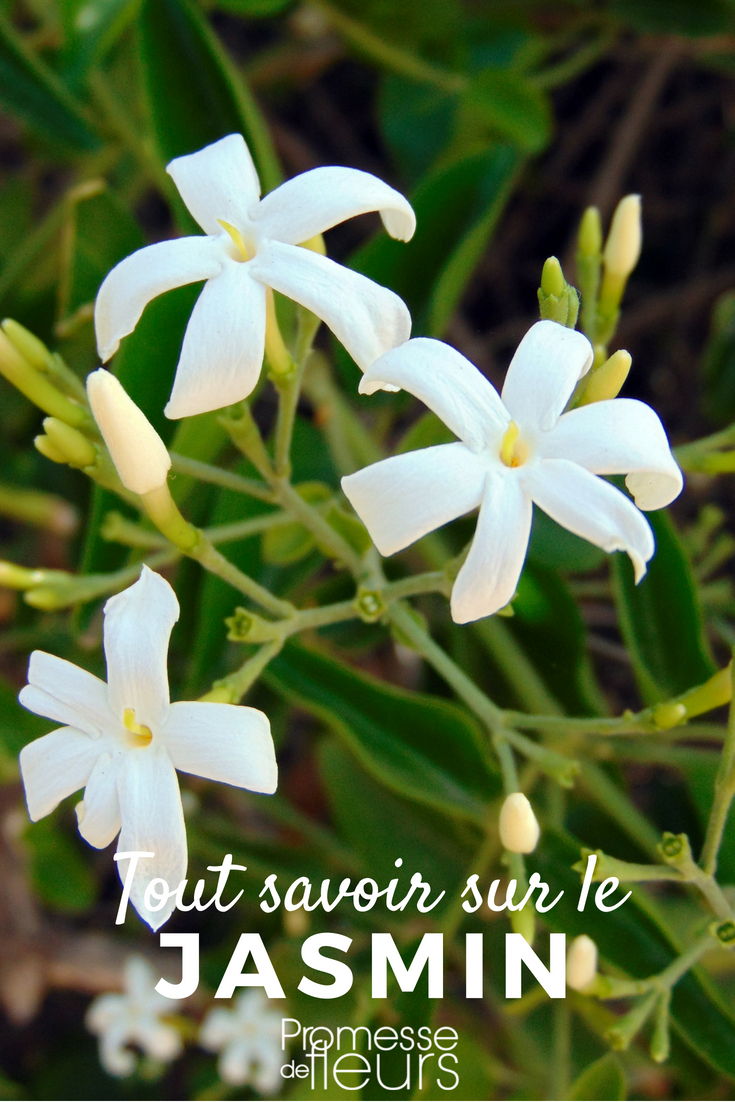






























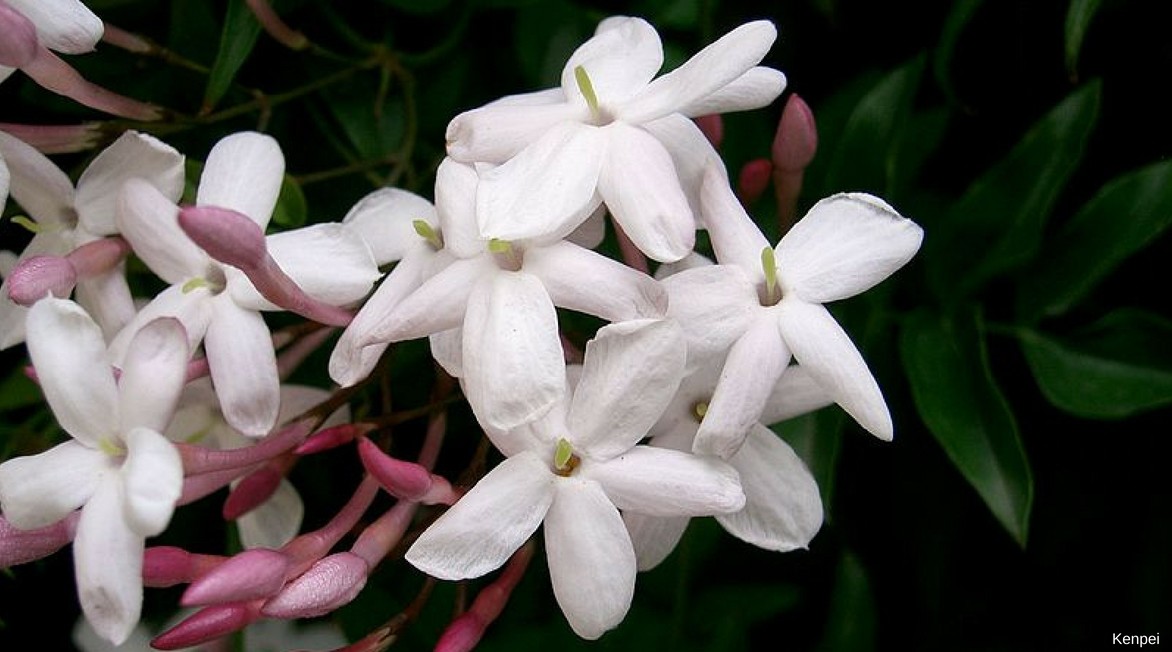

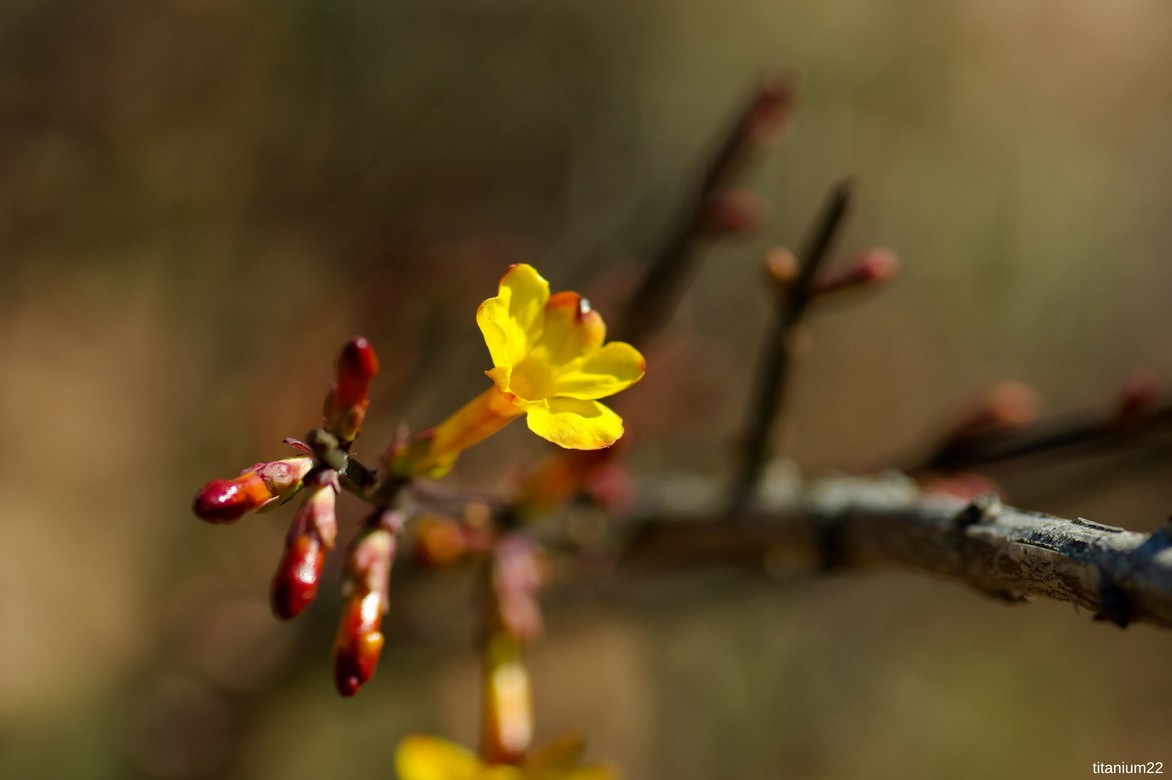
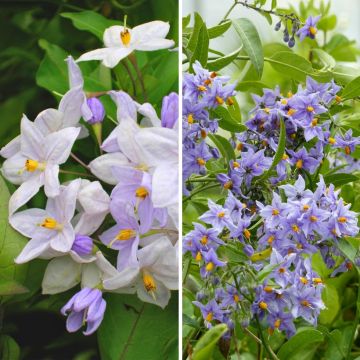
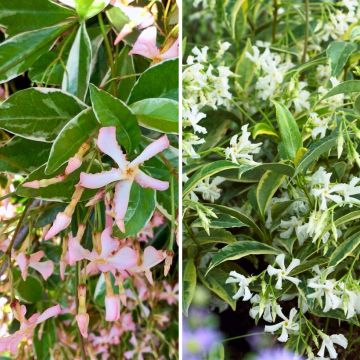
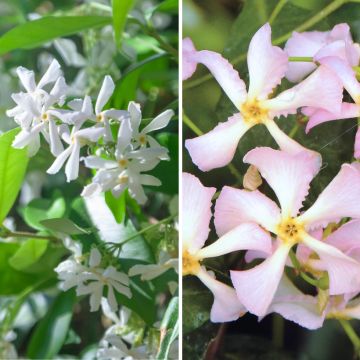

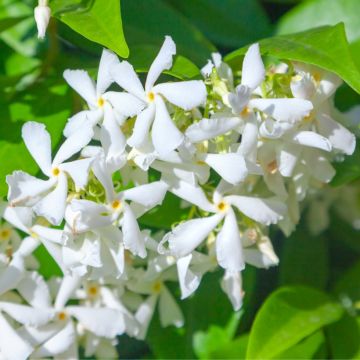

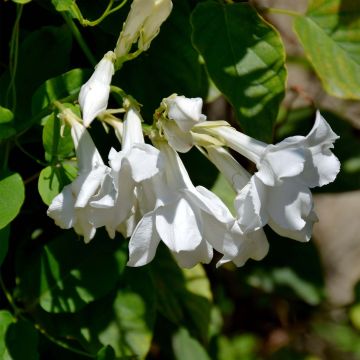

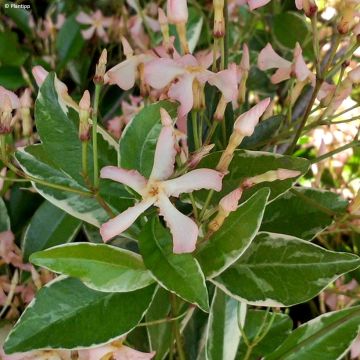
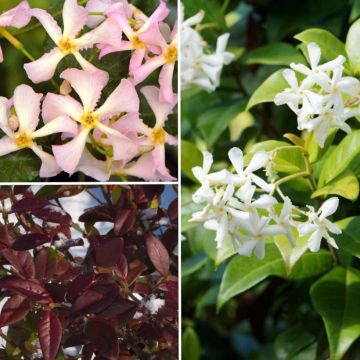
Comments